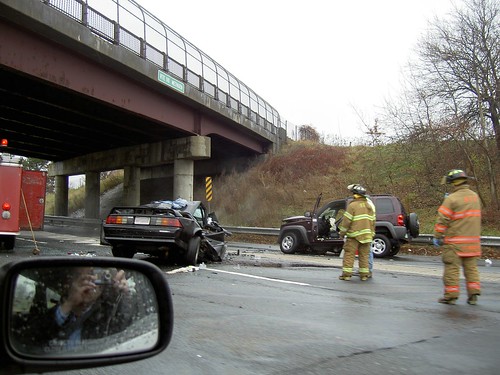U.S. Transportation Secretary Ray LaHood today announced that the number and rate of traffic fatalities in 2010 fell to the lowest levels since 1949, despite a significant increase in the number of miles Americans drove during the year.“Last year’s drop in traffic fatalities is welcome news and it proves that we can make a difference,” said U.S. Transportation Secretary Ray LaHood. “Still, too many of our friends and neighbors are killed in preventable roadway tragedies every day. We will continue doing everything possible to make cars safer, increase seat belt use, put a stop to drunk driving and distracted driving and encourage drivers to put safety first.”
According to the National Highway Traffic Safety Administration’s (NHTSA) early projections, the number of traffic fatalities fell three percent between 2009 and 2010, from 33,808 to 32,788. Since 2005, fatalities have dropped 25 percent, from a total of 43,510 fatalities in 2005. The same estimates also project that the fatality rate will be the lowest recorded since 1949, with 1.09 fatalities per 100 million vehicle miles traveled, down from the 1.13 fatality rate for 2009. The decrease in fatalities for 2010 occurred despite an estimated increase of nearly 21 billion miles in national vehicle miles traveled.
A regional breakdown showed the greatest drop in fatalities occurred in the Pacific Northwest states of Washington, Oregon, Idaho, Montana and Alaska, where they dropped by 12 percent. Arizona, California and Hawaii had the next steepest decline, nearly 11 percent.
“The decrease in traffic fatalities is a good sign, but we are always working to save lives,” said NHTSA Administrator David Strickland. “NHTSA will continue pressing forward on all of our safety initiatives to make sure our roads are as safe as they can possibly be.”
The Department of Transportation (DOT) has taken a comprehensive approach to reducing roadway fatalities by promoting strong traffic safety laws coupled with high-visibility enforcement and through rigorous vehicle safety programs and public awareness campaigns.
In 2009, Secretary LaHood launched a national anti-distracted driving campaign modeled on other successful NHTSA efforts to reduce fatalities, such as its “Over the Limit. Under Arrest.” and “Click It Or Ticket” campaigns to curb drunk driving and increase seat belt use. The U.S. DOT has launched a dedicated website, Distraction.gov, to provide the public with a comprehensive source of information on distracted driving. DOT has also hosted two national summits devoted to the issue, crafted sample legislation which states can use to adopt distracted driving laws, and initiated pilot law enforcement programs in Hartford, Conn., and Syracuse, N.Y.
NHTSA has also taken action to improve vehicle safety. The agency has urged automakers to swiftly and voluntarily report safety defects to keep the driving public safe. NHTSA has also encouraged the development and use of technologies to prevent crashes, such as electronic stability control, forward collision warning and lane departure warning systems. The agency also unveiled an updated 5-star rating system in 2010, which established more rigorous crash-test standards and began providing consumers with improved information about which cars perform best in collisions.
The U.S. Department of Transportation’s Federal Highway Administration (FHWA) has also been encouraging the use of Safety Edge technology — which reduces drivers’ risk of running off the road by shaping pavement edge — on new road and highway projects. FHWA has also promoted the use of rumble strips and cable median barriers to separate opposing directions of traffic to reduce the incidence of crossover head-on collisions.
To view NHTSA’s latest statistical projections of traffic fatalities in 2010, including regional estimates, click here.



